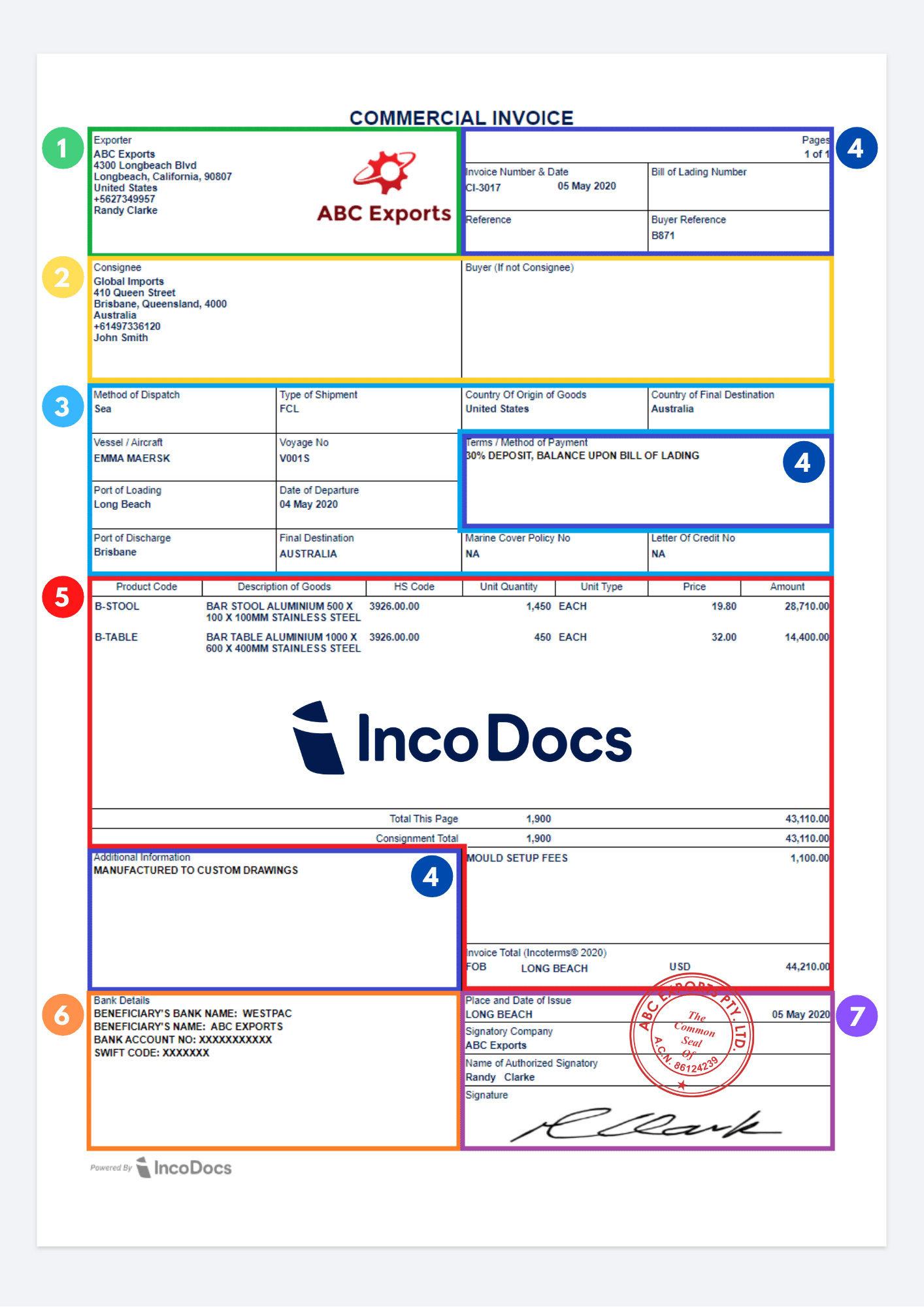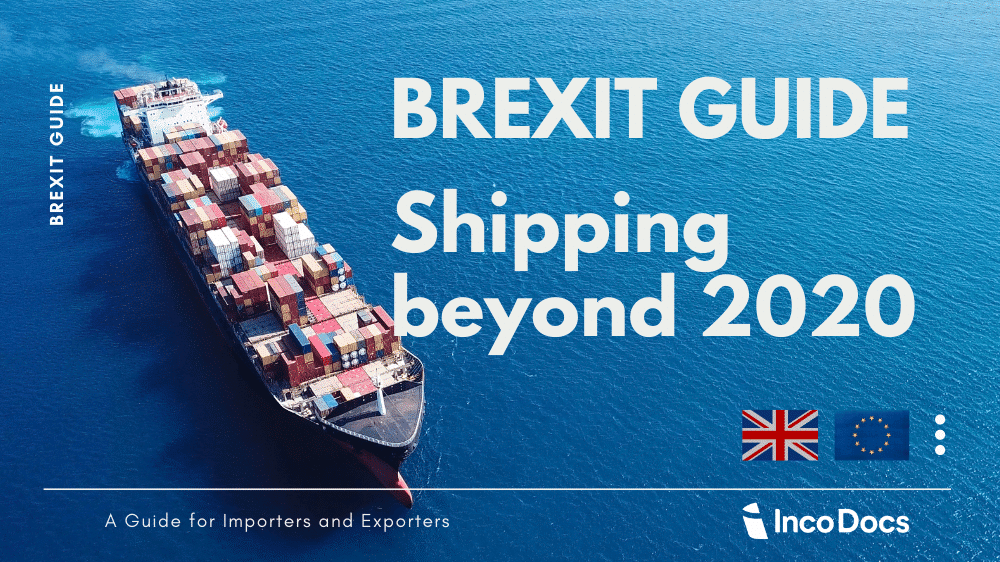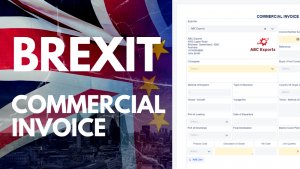Guide to Managing Brexit Customs and Shipping Documentation Regulations in 2021 and Beyond
The United Kingdom officially left the European Union on the 31st of January 2020. The UK is in a transition period (or implementation period) that ends on the 31st of December 2020. During that time, the UK-EU trading relationship remains the same.
However, from the 1st of January 2021 and beyond, new trading regulations will come into effect that will impact all exports from the UK to the EU, and all imports from the EU into the UK. While the United Kingdom and the European Union are in negotiations for a new trade agreement, it is still unknown whether they will come to a deal before 2021.
If a new trade deal is not reached then the UK may be faced with trading with the EU under the rules set by the World Trade Organization. New tariffs would then be applied to exports from the UK into Europe, increasing their pricing in the market and making them less affordable and attractive in European markets. New tariffs can also be applied for exports from the EU into the UK, again making them more expensive, which may encourage importers to source from other countries outside the EU. If a UK-EU trade deal is reached sometime in the future, then it may include details of reduced tariffs.
Regardless of whether a trade deal is reached, any shipments from the EU-UK or UK-EU will be treated as import or export shipments, which will require additional trade documentation.
In December 2020, widespread confusion still remains as to the exact changes to customs regulations. If shippers in the EU and UK do not provide relevant documentation and information on their shipments, it will likely face delays that will cause a knock on effects. Such customs delays may cause significant traffic bottlenecks at ports and borders in both the UK and the EU.

How Shippers can Prepare for Imports and Exports between the United Kingdom and European Union Post Brexit
There are some things that shippers can do to prepare for Brexit. We’ve put together a list of useful information to help you get ready for Brexit in 2021 and beyond.
- Obtain an Economic Operator Registration and Identification (EORI) number
- Find good Freight Forwarder or Customs Broker
- Check if you require a licence to export goods
- Understand and Determine your HS or HTS codes
- Create compliant export documentation to meet Brexit regulations. Documents include Commercial Invoices, Packing Lists, Declarations, other Export Documentation and storing historical records of export documentation.
- Other useful Global Trade Resources. Incoterms® 2020 Explained, How to manage your export business remotely, How to calculate the landed cost of imported goods, Understanding shipping container specifications, Countersigning Proforma Invoices, Purchase Orders and Sales Contracts, Unit Load Device (ULD) Specifications Chart
1 – How to obtain an Economic Operator Registration and Identification (EORI) number
An Economic Operator Registration and Identification number is required when importing and exporting goods from the European Union. If your business does not have an EORI number, then you might face delays and increased costs while importing or exporting goods.
Post Brexit, businesses that want to import from the EU (or other countries) into the UK will require a UK EORI number. Businesses that want to import into the EU from the UK (or other countries) will require an EU EORI number. If you don’t have an EORI number then you can obtain one from the customs authority in any EU country.
You can obtain an EORI number in the UK at this link here.
You can lookup and validate EORI numbers at this link here.
2 – How to find a good Freight Forwarder or Customs Broker
International supply chains involve dealing many different logistics and customs processes in different countries. When importing or exporting products Internationally, it’s essential to partner with a freight forwarder or customs broker that understands your business and fits your import export operations.
You can partner with these companies to give them the authority to act on the behalf of shippers to arrange services ranging from International freight charges, customs clearance procedures, import duties & taxes, port handling fees, local trucking and more.
They are the most efficient when handling the multiple declarations to government customs systems that will be required post Brexit. Although it’s possible to make your own customs declarations, the process is quite complex and it’s usually only suitable for larger more experienced exporters.
Read more on how to choose the right freight forwarder or customs broker here.
Here’s where you can find a Customs Agent or fast parcel operator in the UK here.
If you do want to submit your declarations yourself, they will have to be sent electronically through the Customs Handling of Import and Export Freight (CHIEF) system. To use this system you must apply and become approved, then it usually requires using another software system to submit the declarations to the CHIEF system.
3 – Check if you require a licence to export goods
Some goods follow special rules that will require a verified licence to export. Determining if you require an export licence for your goods depends on:
- The Nature of the goods
- Origin and Destination of the goods
- The ultimate end use of the goods
Restricted products range from some agricultural products to military goods. To find out if you require an export licence, you can find a list of prohibited and restricted goods at your government’s website.
You can check if you require an export licence from the United Kingdom here.

4 – Understand and Determine your HS or HTS codes
The HTS code, or HS code are part of a worldwide standardized system of classifying goods in International trade. They are also know as a Harmonized System Code or a Tariff Code. These are significant unique numbers that are used to identify and determine the different types of products that have been shipped around the world.
These codes contain a minimum of 6 digits and can be up to 10 digits long. Customs departments and governments around the world will use these codes to identify and classify products, to apply the relevant import tariffs and taxes to each product.
Post Brexit, all imports and exports into and out of the UK, and imports from the UK into the EU will require a HS or HTS code to correctly identify products for customs tariff classification. These codes must be supplied on relevant shipping documentation, such as Commercial Invoices and packing lists.
Read more about HS and HTS codes here.
How will tariffs change, post Brexit?
If a new trade deal is not reached then the UK may be faced with trading with the EU under the rules set by the World Trade Organization. In this case, many new tariffs will be applied to exports from the UK into the EU, and for exports from the EU into the UK.
If a new UK-EU trading deal is confirmed in the near future, then it may include details of reducing such tariffs to some countries. Time will tell as governments continue the negotiations process.
5 – How shippers create compliant export documentation to meet Brexit regulations
What types of shipping documents have to be created after Brexit?
Post Brexit, shipments into and out of the United Kingdom will require detailed shipping documentation so that products can be cleared through Customs. As an exporter, you will be required to submit export documentation for Brexit such as Commercial Invoices, Packing Lists, Declarations, Certificates and more.
It’s important that export documentation that is provided post Brexit contains all of the required information and fields. If documentation is missing information, it can cause costly delays, fines or missed shipments. Below is an insight into how to create Commercial Invoices and Packing Lists for Brexit procedures.
How to create a Commercial Invoice document for export
The template for a Commercial Invoice will contain all important information and instructions for importers, freight forwarders, customs, agents and banks (if required) to use during the import export process. The Commercial Invoice template will contain all product and transaction information, HS codes, Incoterm®, details of the exporter & consignee with EORI number if applicable, and shipping details such as type of shipment, port of loading and port of discharge.
Below is an example Commercial Invoice document template to use for exporting products around the world. Note that you can add the relevant EORI number to meet Brexit Customs requirements.
Read more about how to create a Commercial Invoice PDF document for export here.

More Invoice Resources
Exporters use IncoDocs’ cloud shipping document software to create and manage all shipping documentation in 1 place and eliminate manual data re-entry. Users eliminate data re-entry by entering data into 1 master screen then have everything instantly sync to all shipping documents required.
Shipping documents include Commercial Invoices, Packing Lists (for FCL, LCL Air or Consolidated shipments), Verified Gross Mass Declarations (VGM), Shipper’s Letter of Instruction (SLI), Forwarding Instructions (FI), Manufacturer’s Declarations and other shipping documentation.
How to create a Packing List document for export post Brexit
An export Packing List document is an detailed document that contains all of the product and packaging details contained in each shipment. A freight forwarder, customs broker and other supply chain parties will use the information contained on the document to correctly identify and transport the cargo. An export packing list will be used by Customs in the country of export of import to understand exactly how the products are packaged and loaded together in shipments.
Depending on how products are packaged together, an export Packing List can be created in multiple ways. Below are 2 example Packing List document templates to use for exporting products around the world.
Create a Packing List document for FCL, LCL and airfreight
This packing list template allows you to detail how multiple products and packages are mixed together inside shipments. This can be used for FCL, LCL and airfreight shipments and allows you to group together products into packages however they have been packaged together, i.e. mixed cartons, mixed pallets etc.
Create a Packing List document for multiple container shipments
This packing list template allows you to add multiple container numbers, seal numbers and description of goods when multiple containers are shipped together in the same shipment. Note that using IncoDocs, you can import multiple lines of information directly into the packing list document, to eliminate manual data re-entry.
Other export documentation may be required, depending on the products being shipped and the Country of Origin and Country of Destination. Using IncoDocs, shippers can easily create other export documents including Declarations, Shipper’s Letter of Instructions (SLI), Verified Gross Mass (VGM) declarations, Forwarding Instructions and more. In some cases a Certificate of Origin document is required, which can be created by the shipper, or the local Chamber of Commerce.
Keep a record of all of your Export Documentation
Note that in most cases, shippers are required to keep copies and records of all shipping documentation for a period of 6-7 years for auditing purposes. Be sure to safely and securely save all documentation relating to your shipments.
Understanding VAT Implications Post-Brexit
With the conclusion of the Brexit transition period, businesses trading between the UK and EU must be well-versed in the VAT implications of their transactions. Previously, as part of the EU, the UK enjoyed certain VAT benefits, but post-Brexit, the landscape has shifted.
VAT Treatment for Exports: VAT, or Value Added Tax, is levied on goods and services consumed within a country’s borders. For businesses exporting out of their territory, it’s possible to apply a zero-rate to the goods, provided certain conditions are met. This means that while the goods are taxable, the rate of VAT applied is 0%. It’s crucial for exporters to understand these conditions to ensure compliance and avoid potential financial pitfalls.
Documentation is Key: Alongside understanding VAT implications, ensuring that all necessary documentation is in order is paramount. This includes having a valid EORI number, which is essential for trading, and completing and sending a Power of Attorney, which allows entities like DSV to act as a Customs Agent on a business’s behalf. Additionally, businesses may need specific licenses to export certain restricted goods, and understanding the commodity code of the goods is essential for filling out export declarations.
Final Thoughts: As the post-Brexit landscape continues to evolve, staying updated on VAT implications and ensuring all documentation is in order will be key for businesses to navigate this new era of trade between the UK and EU. Regularly consulting with customs experts and monitoring government and customs sources will be essential in the coming months and years.
6 – Other useful Global Trade Resources
Global Trade can be a complex process. Our team at IncoDocs are dedicated to making Global Trade easy. Read some more useful articles to help you with your import export process. Happy Shipping!







